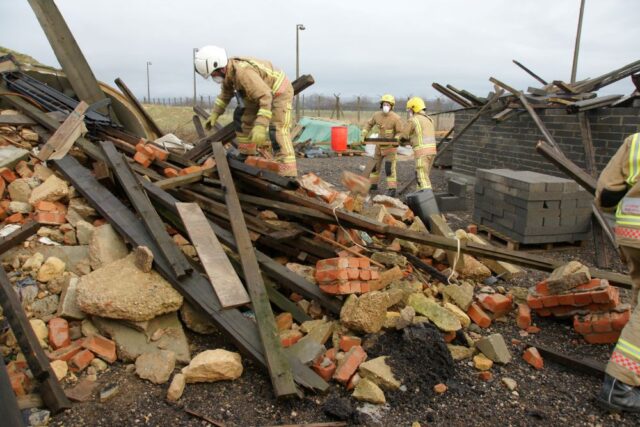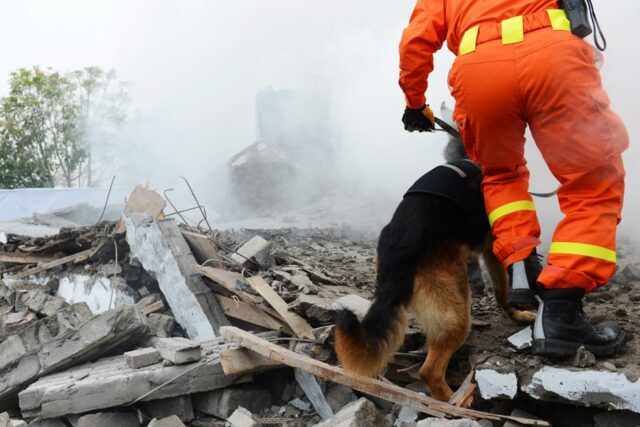
When catastrophic disasters like hurricanes, floods, earthquakes, or wildfires happen, countless people are left stranded without basic necessities. They have lost their homes, schools, jobs, and belongings in the destruction’s wake.
Providing immediate relief and long-term recovery efforts to help these victims get back on their feet requires an incredible amount of humanitarian aid and financial resources for supplies like food, water, medicine, shelter, and rebuilding costs.
Scale of Needs During Crises

After major disasters, the sheer amount of supplies and rebuilding costs required are astronomically high. Relief organizations are often flooded with monetary donations in the immediate aftermath.
Nonetheless, the initial wave of aid usually declines over time, even though community needs for ongoing housing, infrastructure and healthcare endure for months or years. Maintaining funding until communities fully recover remains an obstacle. Creative funding approaches help to address this.
Traditional Fundraising Tactics
Traditionally, nonprofits like Brother’s Brother Foundation appeal to the public directly through campaigns asking for relief donations after news coverage of disasters. Online, TV, radio, and mail requests for contributions tend to bring in immediate support.
However, attracting consistent, longer-term donations poses challenges. Also, suddenly needing to handle and distribute sizeable sums responsibly puts pressures on aid groups, especially smaller community organizations with limited staffing resources already stretched thin by the crisis itself.
Grassroots Crowdfunding Campaigns

Crowdfunding uses online platforms where hundreds of individuals can donate small amounts that add up. Leading sites used for disaster campaigns include GoFundMe and YouCaring.
These were used extensively after affects from Hurricanes Harvey, Irma and Maria left U.S. southern coastal regions reeling. Both nationwide causes and personalized community pages brought in significant aid.
The grassroots nature gave more stakeholders chances to take part by spreading daily social media updates. Nevertheless, transparency around distribution and reporting impacts back to donors posed crowdfunding oversight challenges for overwhelmed local groups. Policies continue improving.
Entertainment Industry Benefit Events
Other phenomena after major disasters are large-scale celebrity charity events, like television concert specials during which musical artists perform while audiences donate to pooled relief funds by calling pledge lines. More recently online streaming and digital fundraising mechanisms are integrated into entertainment benefits.
Screens often display live totals raised and provide options for viewers without disposable income to share hashtags to boost reach. While extremely effective for bringing public attention to ongoing needs, organizing costs and logistics for such huge events limits how much goes directly to aid. Some suggest more small community-based concerts.
Creative Corporate Partnerships

Increasingly, innovative corporate partnerships offer alternative stable funding streams when disasters are not dominating news cycles. Brands launch specialty products or services they market to conscious consumers and promise to donate a share from each purchase towards relief groups.
Consumer education on actual percentage amounts per item directed to recovery reduces perceived exploitation. Partners access new demographics while nonprofits receive steady, reliable disaster financing even years later through ongoing sales.
The Challenges Ahead
Innovations in disaster relief fundraising have enabled more agile, scalable responses globally. Climate models predict increased frequency and severity of weather-related crises like floods, wildfires, and superstorms with each passing year.
Building smart funding models now helps put the pieces in place to adequately handle what promises to be a century of ever-growing challenges ahead to sustain and rebuild communities encountering catastrophic setbacks.
Conclusion
Disaster relief requires extensive resources to operate effectively before, during and long after catastrophic events cause regional instability. Traditional donation models struggle with generating consistent support matched to rising calls to action.
But embracing creative solutions like grassroots crowdfunding, large-scale entertainment benefits and corporate cause-marketing partnerships means forward-thinking organizations are succeeding in engaging wider audience commitment to crisis response.













